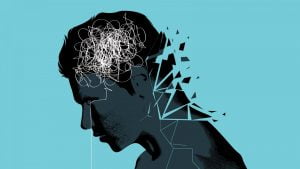When Anxiety “Robs” Your SERENITY

Source: Shutterstock
What is GAD?
Anxiety is part of our daily life. It is normal to feel anxious about something or about certain events, as it could be warning us of a potentially dangerous situation, helping us to plan ahead for it. However, when the anxiety becomes excessive, chronic, uncontrollable then it might be a disorder. Generalized Anxiety Disorder (GAD) is defined as having excessive and pervasive worry on everyday life events, or even something that does not exist. They would be worrying so much that it interferes with their daily functioning, and their relationship with others because they couldn’t control the worry. Symptoms usually first appear during adulthood, but it does occur in all ages too including childhood and adolescence. Interestingly, what differs between having GAD during childhood/adolescence or during adulthood is the content of their worry, which tends to be age-appropriate. Children and adolescents would tend to worry about their competency at school, sports performance, possibility of catastrophic event, etc; while the adults would tend to worry about their work performance, their family well-being, their physical health, etc. The common symptoms of an individual with GAD are as stated below:
– Difficulty concentrating
– Trouble sleeping
– Irritability
– Easily fatigue
– Muscle tension
– Restlessness, or feeling on-edge
What causes GAD?
There are no specific factors that contribute to the development of GAD, however, we are able to identify a few common factors that influence the development of GAD. Firstly would be the genetic predisposition. Studies have shown that if one of our first degree relatives, such as parents, siblings, and your child, have GAD we would have a higher risk of developing one too. Surprisingly, women are also more likely to have an anxiety disorder in general than men. Secondly, our life experiences would also play a big role in developing GAD in us. Researchers have found that experiencing trauma in childhood could increase our risk of developing GAD. Traumatic experiences such as the death of a loved one, involved in a major car accident, abandonment, physical and mental abuse, neglect, etc. These traumatic events would leave us feeling uncertain, feeling extra cautious, or humiliated, it is understandable that it would make us more anxious in different circumstances later on in life.
Treatment for GAD?
Similar to most mental disorders, psychotherapy and medication are the most common treatments for GAD. Cognitive-Behavior Therapy (CBT) is one of the most common and effective therapy for GAD, as its benefits could last longer than having medications, not to mention that some medications could have side effects. CBT aims to modify your thinking and behaviors, to be mindful of your thinking process and to help you to distance yourself from those anxious thoughts. However, there is no single treatment that works for everyone. Some may prefer or actually require medication instead of CBT.
Medications such as anti-anxiety, anti-depressant, or sedatives are usually prescribed. Anti-anxiety, such as Xanax and Klonopin, have high risk of dependency and abuse; Antidepressant such as Buspar, Zoloft, Lexapro, etc, might have several side effects including dry mouth, nausea, diarrhea, dizziness, headaches, etc; sedative such as diazepam are usually prescribed for severe cases as it helps to ease severe anxious symptoms within 30 to 60 minutes.
There are also less formal approaches in easing the symptoms, by changing their daily lifestyle. These may include regular exercise, yoga/meditation, a well-balanced diet, good quality of sleep, and self-help books.
Living with GAD
Living with GAD is not easy, for both the person and the relatives/caregivers. It makes their lives frustrating and terrifying, as the patient would be worried about anything and everything most of the time. For example, laying awake at night worrying that your house would get burned down, you have forgotten to do your homework and worry that it might end your school career, when your husband/wife ran up to a grocery store and you worried that a drunk driver would drive over and kill him/her. Especially at night before bed, you may find your thoughts running through your worries, giving you a hard time to fall asleep. These are the parts of the daily life of someone that has GAD.
However, if you are a victim of GAD, remember while you walk through your journey with GAD, you are not alone and you could still live a fulfilling and normal life. You might feel it’s hard and uncontrollable right now, but there are resources, trained professionals, and coping techniques to help you with it. Learning how to manage your triggers and keep a positive attitude will all help.
References
Wittchen, H.-U. (2002). Generalized anxiety disorder: prevalence, burden, and cost to society. Depression and Anxiety, 16(4), 162–171. https://doi.org/10.1002/da.10065
Gottschalk, M. G., & Domschke, K. (2017). Genetics of generalized anxiety disorder and related traits. Dialogues in clinical neuroscience, 19(2), 159–168. Retrieved from https://www.ncbi.nlm.nih.gov/pmc/articles/PMC5573560/
Borza L. (2017). Cognitive-behavioral therapy for generalized anxiety. Dialogues in clinical neuroscience, 19(2), 203–208. https://www.ncbi.nlm.nih.gov/pmc/articles/PMC5573564/
Glasofer, D. R. (2020, July 11). An Overview of Generalized Anxiety Disorder. Verywell Mind. https://www.verywellmind.com/generalized-anxiety-disorder-4157247
Carey, E. (2020, April 3). Generalized Anxiety Disorder. Healthline. https://www.healthline.com/health/anxiety/generalized-anxiety-disorder
